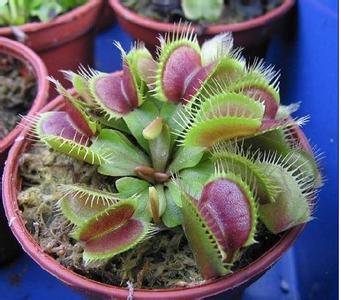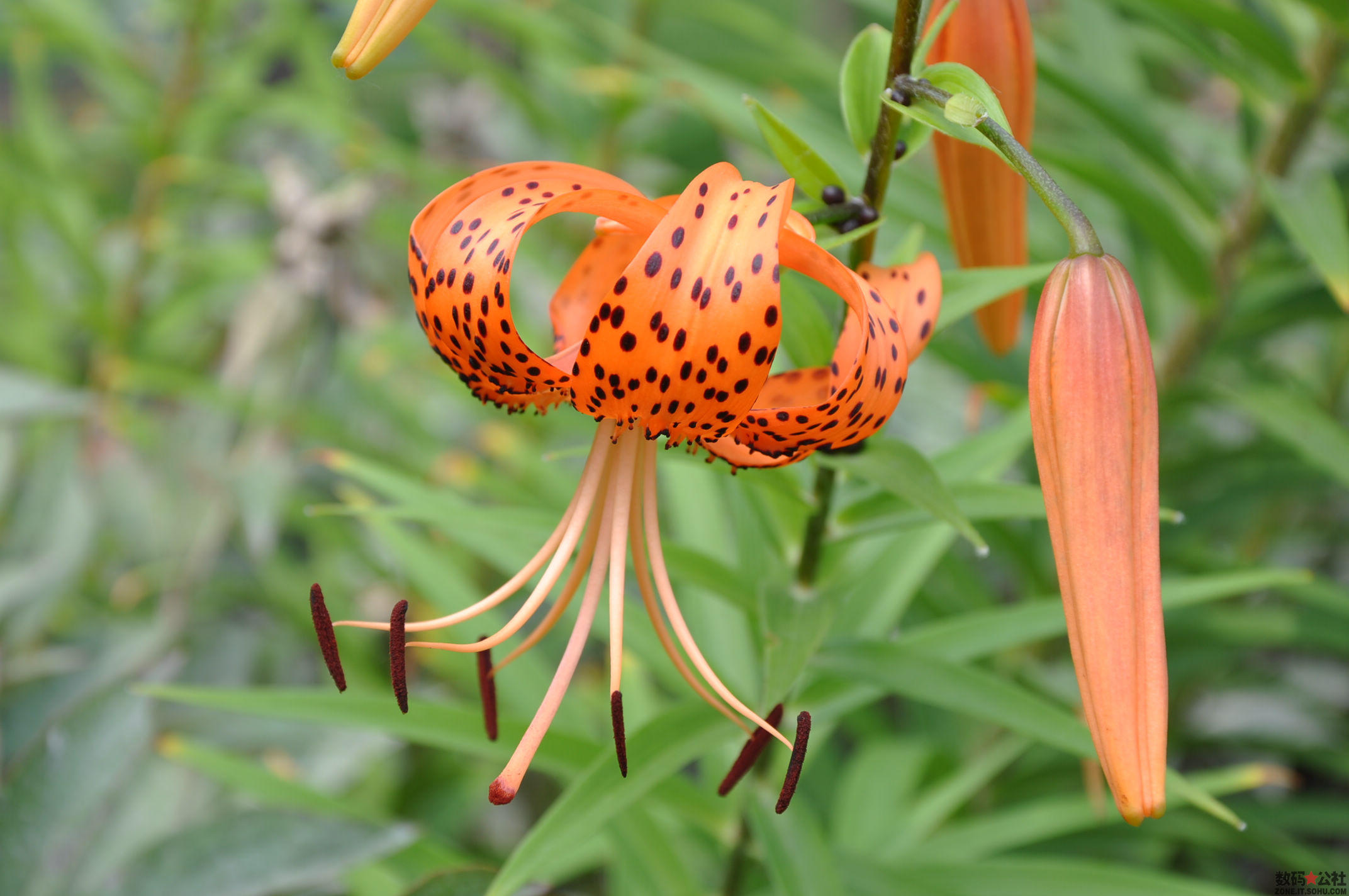Culture methods and matters needing attention of Clematis paniculata
Sowing seeds
Sowing time: March to June, called spring sowing. The florescence is from August to December.
It is also possible to sow seeds in late August or early September in autumn, which is called autumn sowing. In this way, the dry lotus will blossom during New Year's Day and the Spring Festival.
Sowing and raising seedlings: the optimum temperature for germination is 18-20 degrees. Sow on demand, cover about 1 cm of soil, water thoroughly and keep moist, sprout for 7 days. 2-3 true leaves when picking the heart on the pot, properly arrange the leaves and branches are conducive to ventilation, so that the flowers exposed.
How to make the dry lotus blossom during New Year's Day and Spring Festival? Sowing in late August or early September in autumn, when the seedlings grow 3 true leaves, move them into the medium flowerpot and put them in the sunny place in the open field for general watering management.
"Frosts Descent" later moved it indoors and put it in a sunny place. the temperature was kept at 15 degrees Celsius-25 degrees Celsius, with a minimum of 8 degrees Celsius. Usually pay attention to turning the pot to make the plant plump and beautiful. Watering should be moderate, too dry leaves turn yellow, too wet is easy to rot. Apply 0.5% potassium hydrogen phosphate solution every 10 days, do not apply more nitrogen fertilizer, so as not to grow too much.

Reproduction
The method of sowing or cutting is used for propagation. The seeds were sowed in the greenhouse from August to October. Before sowing, the seeds were soaked in warm water of 40-45 degrees Celsius for 24 hours. After sowing, the seeds were kept at 18-20 degrees Celsius. The seedlings could emerge in 7-10 days, and the seeds were planted in the planting pot in May of the following year. The cuttings were carried out from April to June, and the young stems were selected as cuttings, the lower leaves were removed, shaded and kept humid, and rooting could take place in 2-3 weeks.
With the growth of stem vines, bamboo should be used in time to set up the stand and bind the branches. Topdressing once every 10-15 days, sufficient moisture and high air humidity should be maintained throughout the growth period.
Each flower has 8 stamens and 1 pistil, of which 8 stamens do not mature at the same time. When all the pollen is dispersed, the pistil matures and extends to the flower's trumpet □.
It can be propagated by cutting and sowing. From April to June, the cuttings took root in 15-20 days at 12-15 degrees Celsius. Soak the seeds in warm water of 40-50 degrees Celsius for 24 hours before sowing, cover the soil 1 cm after sowing, put it in a semi-shaded place, germinate in 7 days, and transplant the seedlings one month later before the stem is extended. Potted plants often set up brackets, and sequentially tie the stems and vines into fan-shaped, umbrella-shaped, spherical and so on. Flowers and leaves have strong hydrotaxis. Don't overwater it. It is often damaged by whitefly and red spider. Culture methods and matters needing attention of Clematis paniculata
The Culture method of Clematis paniculata
Basin soil
The sandy loam soil rich in organic matter should be used for the cultivation of Clematis paniculata, and the PH value is 5-6. Fertilization is generally applied every 3-4 weeks during the growing period, and the soil should be loosened in time after each fertilization to improve ventilation and facilitate root development.
Water and fertilizer management
Watering: dry golden lotus likes to be wet and afraid of waterlogging, and the soil moisture is maintained at about 50%. During the growth period, small water should be watered frequently, watering once every 2-3 days in spring and autumn, watering every day in summer, and spraying water on the leaves in the evening to maintain high humidity.
Fertilization: in the process of growth, generally apply the rotten bean cake water with a concentration of 20% once a month.
Stop applying nitrogen fertilizer during flowering and apply 0.5% superphosphate or rotten chicken and duck manure once every half month.
After the flower fade, 30% of the rotten bean cake water was fertilized once to supplement the nutrients consumed by flowering.
Stop fertilizing in hot summer. The compound overwintering fertilizer was applied again at the end of autumn to enhance the cold resistance of the plant.
Light
Dry golden lotus like sunshine, spring and autumn should be placed in a sunny place, summer should be properly shaded, winter room temperature should be kept at about 15 ℃, sufficient sunshine, it can continue to grow and develop.
Mode of reproduction
Golden lotus can be self-pollinated and seeds can be sown and propagated.
Golden lotus can also be propagated by cutting, which can be carried out in the Spring and Autumn period.
Matters needing attention in family culture of Clematis paniculata
Common diseases and insect pests of Clematis paniculata
Common diseases of Trollius: mosaic disease, ring spot disease
Common insect pests: leaf miner and red spider
Golden lotus can be used as spice.
Clematis paniculata is a non-toxic ornamental flower, and the flowers will give off fragrance. Young shoots, buds and fresh seeds can be used as spices, but the taste is heavy and spicy.
How to raise Anoplophora acuminata? breeding methods and precautions / sufficient light should be needed.
Among the plants that can observe both leaves and flowers, it is relatively easy to breed. It is not only easy to raise, but also has many effects and functions, so it is very popular, but it still needs to master some skills before breeding. So how to raise it? Let's take a look at the breeding methods and points for attention of Clematis paniculata.
How to raise dry golden lotus
It likes a warm climate, cold and heat resistance is general, the temperature should be kept above 10 degrees and below 35 degrees, otherwise its growth will be restrained, it needs more adequate light in other seasons except summer, and avoid strong light exposure in the middle of summer.
Culture methods and matters needing attention of Clematis paniculata
I. Culture methods
1. Soil
The most suitable soil is the sandy soil rich in humus, the PH value is between 5 and 6, and pay attention to the good drainage of the soil, which can be loosened to ensure the air permeability of the soil, which is beneficial to the growth and development of the root system.
2. Temperature
In the breeding methods and matters needing attention, the suitable growth temperature is 18-24 degrees, while the suitable temperature for germination when sowing and breeding is 18-20 degrees, the temperature should be kept above 10 degrees in winter and below 35 degrees in summer, otherwise it will be difficult to blossom.
3. Lighting
Clematis is a plant that is relatively easy to bloom, but it needs more light during the growing period. It can be maintained in the sun in spring, autumn and winter, but it should be protected from shade in summer to avoid excessive temperature caused by sun exposure. to affect its flowering.
4. Fertilizer and water
Fertilizer and water is very important for dry golden lotus, so how to raise it in this respect? It is usually watered every 2-3 days in spring and autumn, and can be watered once a day in summer, and can be sprayed if the temperature is high. It is necessary to reduce watering during the flowering period to avoid the steep growth of branches. Compound fertilizer is the main fertilizer to ensure the balance of nitrogen, phosphorus and potassium.
5. Reproduction
Under normal circumstances, Golden Lotus will be propagated by cutting or sowing. Sowing can be done in spring, from March to June, or in autumn. Spring is more suitable for cutting. In addition, it can also be pollinated by self-pollination, so the seeds are easier to collect.
II. Points for attention
1. During the rainy season and watering, you should be careful not to accumulate water. Golden lotus likes to be moist but afraid of waterlogging. The moisture in the soil is only 50% lard. If you water too much, the roots are easy to rot, and it is easy to cause leaves to wither and yellow. All usually watering is mainly watered with small water.
2. Try to keep it in a cool place in summer, because the high temperature will affect its flowering and may even cause it not to blossom. After it begins to cool down in October, it needs to be placed in a sunny place to ensure that the temperature is 10-15 degrees Celsius to make it through the winter smoothly.
3. Because the lotus is a semi-trailing plant, if you want to control its growth, it will generally be guided by a bracket, otherwise it will affect the ornamental. When the branches are too long, pruning can be used to control the overall plant shape.
- Prev

Cultivation methods and techniques of flycatcher
Flytrap is a popular insectivorous plant with complete roots, stems, leaves, flowers and seeds. Its leaves are the most important and obvious parts, with the function of preying on insects, obvious spiny hairs and red sessile glands, and look like a big □ with teeth and claws.
- Next

Culture methods and matters needing attention of Lilium lily
The lily lily is known as Curly Dan, inverted lotus, tiger skin lily, perennial herbaceous bulbous plant. Like warm, dry climate conditions, but also more resistant to sunlight. It grows luxuriantly in fertile sandy soil rich in humus and well-drained soil, with well-developed bulbs and colorful flowers. Suitable for nitrogen fertilizer, bean cake and vegetable cake
Related
- Fuxing push coffee new agricultural production and marketing class: lack of small-scale processing plants
- Jujube rice field leisure farm deep ploughing Yilan for five years to create a space for organic food and play
- Nongyu Farm-A trial of organic papaya for brave women with advanced technology
- Four points for attention in the prevention and control of diseases and insect pests of edible fungi
- How to add nutrient solution to Edible Fungi
- Is there any good way to control edible fungus mites?
- Open Inoculation Technology of Edible Fungi
- Is there any clever way to use fertilizer for edible fungus in winter?
- What agents are used to kill the pathogens of edible fungi in the mushroom shed?
- Rapid drying of Edible Fungi

